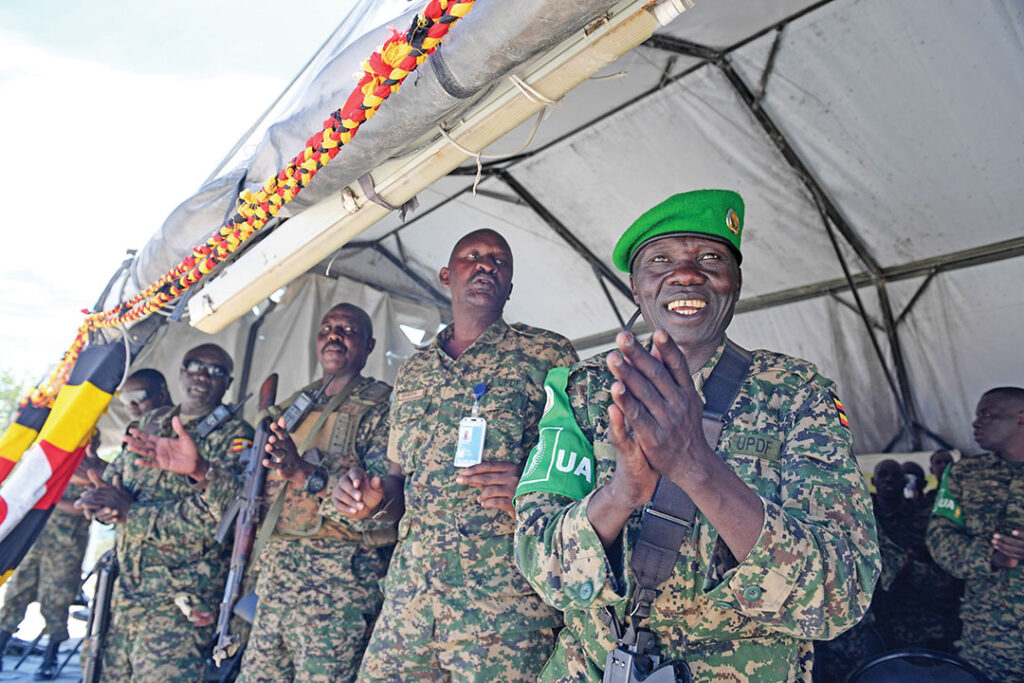ADF STAFF
The Uganda Peoples’ Defence Forces explosive devices team started 2024 by clearing improvised explosive devices (IED) on the major Lower Shabelle Shalambot/Ceeljale supply route as part of the African Union Transition Mission in Somalia.
The team was deployed after IEDs, seemingly planted by al-Shabaab fighters, exploded, hitting a civilian vehicle carrying five people, defenceWeb reported. The wounded were evacuated by a mission humanitarian convoy to Ceelwaligo for treatment.
After the team cleared that section of the road, Uganda Battle Group 37 Commander Col. Charles Asiimwe condemned the planting of IEDs.
“The heinous and barbaric acts committed by al-Shabaab of emplacing IEDs along roads must be condemned by peace-loving people of the world. Al-Shabaab is hell-bent on seeing that Somalia does not attain total peace,” he is reported as saying by the mission.
According to the antipoverty Borgen Project, decades of war have left about 1 million land mines in Somalia. These explosives have killed thousands of Somalis and wounded countless others. The presence of mines also limits communities’ access to land, hindering crop growth and causing famine.
Neutralizing IEDs aims to ensure safety for humanitarian relief convoys delivering essential aid to communities. The peacekeeping mission says al-Shabaab plants IEDs to prevent travelers from using public roads.
The United Nations Mine Action Service was established in 1997 to eliminate the threat posed by mines, explosive remnants of war and IEDs by coordinating mine removal, leading operational responses at the country level and supporting peace operations. Over the years, the service has trained, mentored and equipped African Union mission troops in Somalia with a series of IED threat mitigation capabilities.

